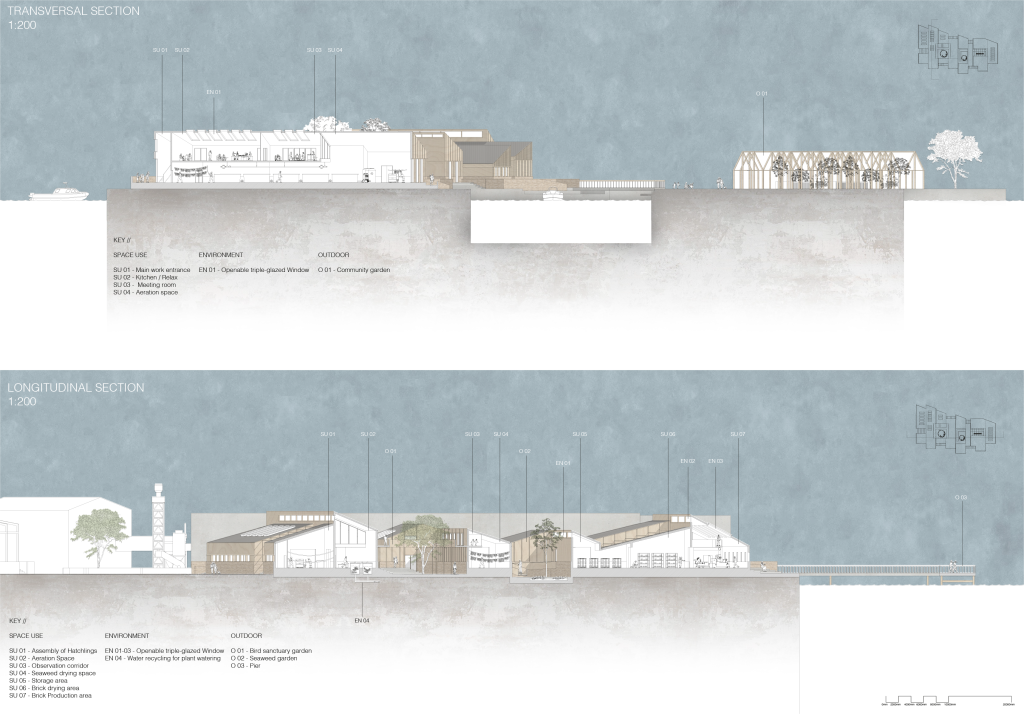Filip Banaszak
Seaweed Sanctuary Gardens
Seaweed is a natural product with incredible properties that is starting to be utilised increasingly in today’s climate; with local offshore farms beginning to sprout up in Cornwall, the Par Horticultural Seaweed Centre is both a processing plant for horticultural seaweed products and a community space for locals and tourists alike. While distributing these amazing products across the country it was also important to ensure that the project also gave back to the community, with spaces for events, a beautiful garden to enjoy and tourist attractions to experience; bringing people together in Cornwall and providing a new route for income in one of the most impoverished counties in England. Each “wing” of the dock represents the two areas of both ‘production’ and ‘community,’ combining in their use and processing of seaweed.
The beauty of using a unique and natural element, seaweed, to create a construction material such as a brick is what this new seaweed facility aims to highlight. The complexity of the processes required to transform this unusual material into a helpful element is an intriguing journey, and it is this journey that I aim to take the visitors on, through a series of walkways, bridges and corridors. This new facility re-purposes a sustainable material, seaweed, as well as the unusable China clay waste to create a product that is re-introduced back into nature, while serving a purpose for the local community. Creating these seaweed bird and bee bricks allow for a sustainable and special way to help wildlife around us feel welcome and safe in a constantly hectic environment. The three internal gardens located within the facility incorporate the three key elements of this project, seaweed, wildlife and the community. Garden one is a safe sanctuary for any migrating birds feeling unsafe in the heavy industrialised area, garden two is a peaceful space that grows the local seaweed types such as sugar kelp, to teach and show the visitors the beauty of this vital element of the produced brick, and the final garden is a house for insects, in particular bees. All three gardens highlight the beauty of wildlife and nature, whilst allowing the local community to come together and witness the unique process of harvesting seaweed and slowly processing it into a product that encourages nature and the local environment.
Contact Email: f.banaszak@icloud.com
Instagram: @_fb_arch
Introduced in the heart of Reading Town, Hogmanay, the Scottish celebration of New Years, brings a large infusion of culture and festivity to the local area. Cock-a-Leekie soup, being an integral cuisine of the Scottish, accompanies the festivities. The influx of Hogmanay culture, introduced by the arrival of the Soup Facility, will indulge Reading in a host of traditions that seek to bring people together to celebrate the New Year and the fresh start that follows midnight. On New Year’s Eve in Reading, the public are invited to join in the activities, including; farming the ingredients for the soup, trying the soup, setting Juniper branches alight at midnight, Ceilidh dancing, drinking homemade Gin, and the chance to watch as the chefs produce the soup from raw ingredients on site.
Cock a Leekie , Scotland, Timber, Homemade, Feathers, New years









